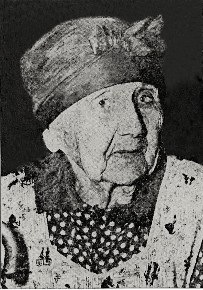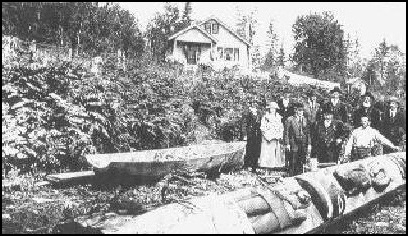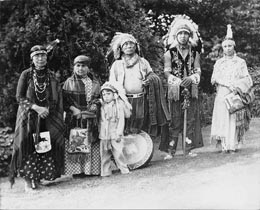You can read an account of Ruth's memories (in her own words) of potlaches in her childhood at . The following is a small excerpt:
Every tribe that he invite did the same thing. Bring whatever food that could help to feed the people. They used to last one week at a time. And what I remember at that time, of course, I was quite small. Each tribe, if it's a big tribe, they used to come in to the village singing. Tie their canoes together and they used to stand on the canoe and dance. Dancing, singing.
Well, the Snoqualmie tribe came and they were singing when they come in. Everybody went out. My mother went out and she hold my hand so I wouldn't get lost. There were so many people standing on the bank. They all came along dancing and they got close to the beach, and before they land, they throw away blankets. The British Columbia Indians, the Cowichan they call. They had their ways. They came there with long poles and they get that blanket, and maybe two or three get hold of that blanket with a pole. When they put it down, well they both get ahold of it and they pulled and pulled and pulled. So the other one give the other man so much, and then he'll have the blanket. Now they keep on like that. On the water. They are on the water, these Cowichan tribe wade on the water.
Then they begin to throw guns on the water and, well, I guess a man was diving after the other one, and they throw another one and hit him on the forehead. All the people said, when he come up, this man. "Oh look at him, why his face is bleeding. Must have hit him." Now this man didn't mind it. He got the gun. Three or four got ahold of that gun. Then they pulled on the water here and there. They go back and come back again. Go back and come back again. Finally, the one who got hold of it first, he has to give so much. Maybe twenty five cents each and then he'll get the gun. The Cowichans they are the only tribe that does that. Got to fight [struggle] for that stuff. Go after it and when they throw blankets from top of the palach house. They have long poles to get ahold of that and pieces of wild sheep from the mountains. Small pieces. It was valuable to them because they make blankets from that stuff. Well, that's all over. When that's all over they all go into the house and then they feed them. Have two meals a day. Noon, they have only a little lunch. In the evening each tribe will sing a song.
. . . That's the way they used to do when they give palach. They used to give palach every fall when there's plenty of everything. Plenty of ducks and plenty of salmon. Cause everything was plentiful at those days. Lots of deer, lots of ducks, lots of salmon, camas. Anything what the other tribe got, well they'll bring it to this palach to feed the people. Well, they'll all go home. Well, maybe here next fall, the other tribes will give a palach, and he'll do the same. That's the way the old people was. In the early days, that's the way they did this palach because white people [called pastad, derived from Boston, the home port of most early American sailors who visited the Pacific coast] thought that was very foolish of giving [away] all what he's got. But keep up the poor, that's what this for. Keep up the poor. That's the end of it.
Every tribe that he invite did the same thing. Bring whatever food that could help to feed the people. They used to last one week at a time. And what I remember at that time, of course, I was quite small. Each tribe, if it's a big tribe, they used to come in to the village singing. Tie their canoes together and they used to stand on the canoe and dance. Dancing, singing.
Well, the Snoqualmie tribe came and they were singing when they come in. Everybody went out. My mother went out and she hold my hand so I wouldn't get lost. There were so many people standing on the bank. They all came along dancing and they got close to the beach, and before they land, they throw away blankets. The British Columbia Indians, the Cowichan they call. They had their ways. They came there with long poles and they get that blanket, and maybe two or three get hold of that blanket with a pole. When they put it down, well they both get ahold of it and they pulled and pulled and pulled. So the other one give the other man so much, and then he'll have the blanket. Now they keep on like that. On the water. They are on the water, these Cowichan tribe wade on the water.
Then they begin to throw guns on the water and, well, I guess a man was diving after the other one, and they throw another one and hit him on the forehead. All the people said, when he come up, this man. "Oh look at him, why his face is bleeding. Must have hit him." Now this man didn't mind it. He got the gun. Three or four got ahold of that gun. Then they pulled on the water here and there. They go back and come back again. Go back and come back again. Finally, the one who got hold of it first, he has to give so much. Maybe twenty five cents each and then he'll get the gun. The Cowichans they are the only tribe that does that. Got to fight [struggle] for that stuff. Go after it and when they throw blankets from top of the palach house. They have long poles to get ahold of that and pieces of wild sheep from the mountains. Small pieces. It was valuable to them because they make blankets from that stuff. Well, that's all over. When that's all over they all go into the house and then they feed them. Have two meals a day. Noon, they have only a little lunch. In the evening each tribe will sing a song.
. . . That's the way they used to do when they give palach. They used to give palach every fall when there's plenty of everything. Plenty of ducks and plenty of salmon. Cause everything was plentiful at those days. Lots of deer, lots of ducks, lots of salmon, camas. Anything what the other tribe got, well they'll bring it to this palach to feed the people. Well, they'll all go home. Well, maybe here next fall, the other tribes will give a palach, and he'll do the same. That's the way the old people was. In the early days, that's the way they did this palach because white people [called pastad, derived from Boston, the home port of most early American sailors who visited the Pacific coast] thought that was very foolish of giving [away] all what he's got. But keep up the poor, that's what this for. Keep up the poor. That's the end of it.
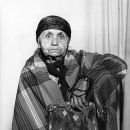
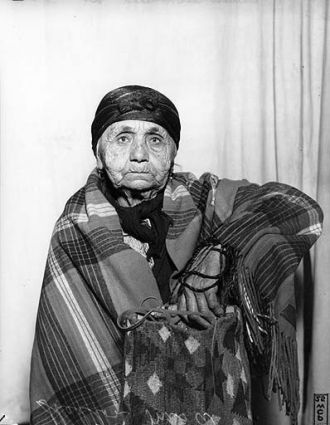
 Kathy Pinna
Kathy Pinna 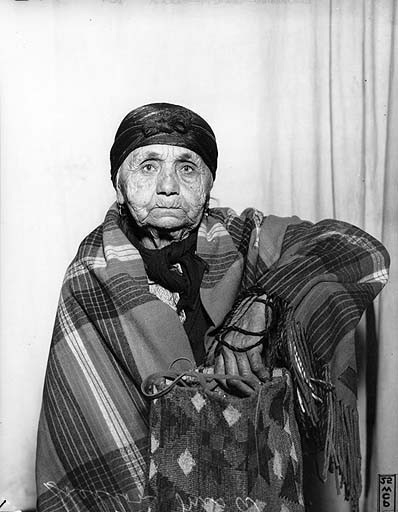
 Char James
Char James  AncientFaces
AncientFaces 